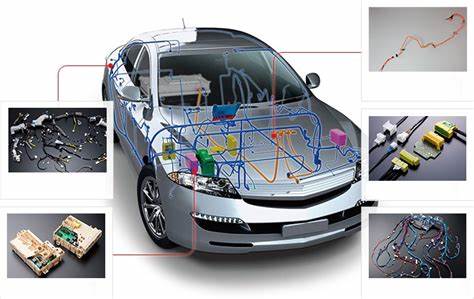When people think about the major attributes of a car, naturally, they gravitate towards things like the engine, tires, body, and other large pieces it can’t function without. However, in the engineering world, savvy professionals know that cars contain multiple intricate electronic systems to operate. This holds true for electric vehicles, as well as traditional ones.
Even though most vehicles on the road run on combustible engines, there are still plenty of elements that require electrical power to work. For instance, the battery, starter motor, alternator, engine control unit (ECU), and many of the vehicle’s features all run on electric power.
This means that the role of electronic components has a significant impact on a vehicle’s overall functionality and capabilities. To provide some additional insight on the matter, the following guide breaks down the most critical automotive-grade components.
Semiconductors
If you’ve been paying attention to the news for the past couple of years, then you probably already know about the ongoing semiconductor chip shortage that’s been affecting the automobile world.
In a general sense, semiconductors refer to the material that conducts electricity. For instance, silicon is used frequently in semiconductors. It doesn’t conduct electricity as well as aluminum or copper, but it conducts power far better than glass. Semiconductors contain billions of electrical switches called transistors that control the flow of current. Ultimately, the semiconductors are responsible for a vehicle’s main functions and features, such as:
- The vehicle’s touchscreen interface
- The vehicle’s safety features (ex: airbags, emergency braking)
- The vehicle’s camera system
- The part of the vehicle’s engine that controls emissions and efficiency
- The vehicle’s battery and powertrain (electric vehicles)
The semiconductor shortage has led to many vehicles either being partially built with missing features or automakers have opted to skip making certain model years of their vehicles.
Real Time Clocks (RTCs)
Real time clocks are essential for power management and frequency control for numerous applications such as wearable technologies, consumer electronics, Internet of things (IoT), medical equipment, and, of course, automotive electronics.
The reason this component is ideal for timing in modern vehicles is because it doesn’t consume a lot of power while remaining reliable. RTCs in vehicles are typically used for:
- Calendar and clock function
- AM/FM car radios
- Battery management units
- Tachographs
- Instrument clusters
Power Inductors
Also known as a choke or coil, power inductors are a two-terminal passive electronic component that clean the output from high-frequency switching power supplies. One of the big benefits of this type of component is that they offer extremely low magnetic radiation in low noise environments.
Power inductors are most typically used in consumer electronics, medical devices, industrial applications, telecommunications, and automotive applications. For vehicles specifically, power inductors are used in electronic control units (ECUs). This unit is responsible for the vehicle’s systems and subsystems. However, there are several different ECUs in a vehicle. Some of the most common ones include:
- Safety ECUs
- Sensing ECUs
- Body ECUs
- Powertrain ECUs
- Information ECUs
The power inductors in ECUs are responsible for the power regulation involved with the anti-lock braking systems, airbags, cameras, radars, climate control, start-stop systems, heads-up displays, and many more.
Quartz Crystals
Quartz crystals are another component known for their ability to keep time. They come in the following varieties:
- Surface Mount (SMD)
- Thru Hole
- AEC-Q200 Qualified
- Tuning Fork
- MHz Crystal With Thermistor
Quartz crystals are ideal for industrial control, applications that require automation, IoT, medical devices and equipment, smartphones, telecommunications, and automotive applications. The AEC-Q200 qualified crystal is one that’s specifically used for applications pertaining to vehicles. For instance, AEC-Q200 quartz crystals are often used for wireless communication systems, tire pressure monitoring systems, audio/video systems, and remote keyless entry fobs.
How to Find the Best Components for Automotive Applications
Now that you know which electrical components are commonly used for vehicle applications, the next step is to provide a brief overview of how to locate them in your area. For those that have an automotive application that requires reliable components, narrowing down your options to the very best ones can be difficult.
Naturally, you must consider price, availability, and most of all, component quality and reliability as they pertain to your application. The best way to get started is to search for “electric components near me” or by using a more specific search, such as “power inductors for vehicles.” Searches like these will return a listing of companies that specialize in these types of components.
From there, you should be able to request component samples that you can test with the application you plan on using them for. Many companies will A/B test components from different companies to see which one delivers the higher performing component. Additionally, if you order a large number of components, many components’ dealers will offer a bulk discount.



































